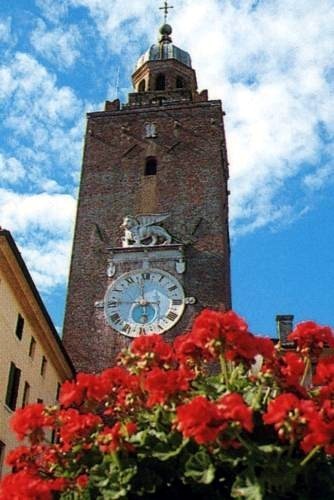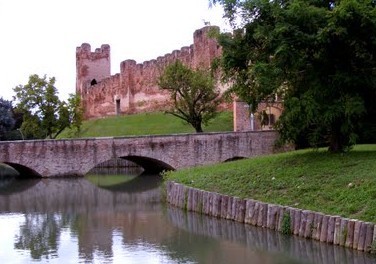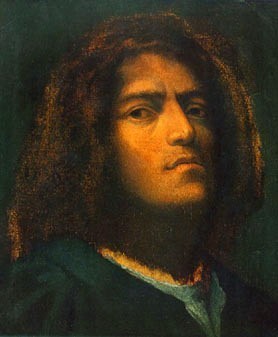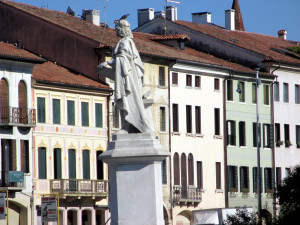To Castelfranco for a Cappuccino and Research
Castelfranco Veneto is only a half hour drive from where we live and our nearest train station. Yesterday afternoon, we went for a coffee in the main square before strolling around and imagining what the town would have been like in the early 16th Century when viewed by Giorgione, the enigmatic artist and hero of the historical sections of my work in progress .
Not much is known about his life, which is why I feel at liberty to invent a story about him and his muse. We do not even know if this is his self-portrait, but I like to think that it is.
His statue also suggests a charismatic hero
even if quite often there’s a pigeon sitting on his head.
Giorgione would have known the tower in the castle walls. 
We walked through the gate underneath
and into the old town to visit the cathedral of Santa Maria Assunta and San Liberale and Giorgione’s altarpiece in the Costanzo chapel.
 It’s a painting done on wood and represents the Virgin and Holy Child with St Francis on the right and a St Nicasius of the Order of the Knights of Malta in armour on the left. Tuzio Costanzo commissioned the work as a memorial for his son, Matteo, who died a young soldier. The C ostanzo coat of arms is on the base of the Virgin’s throne. Tuzio had been in service to Queen Caterina Cornaro, the lady of my novel, in Cyprus, and lived with his family within the town walls. The painting shows the local landscape in the background, typical of Giorgione’s style.
It’s a painting done on wood and represents the Virgin and Holy Child with St Francis on the right and a St Nicasius of the Order of the Knights of Malta in armour on the left. Tuzio Costanzo commissioned the work as a memorial for his son, Matteo, who died a young soldier. The C ostanzo coat of arms is on the base of the Virgin’s throne. Tuzio had been in service to Queen Caterina Cornaro, the lady of my novel, in Cyprus, and lived with his family within the town walls. The painting shows the local landscape in the background, typical of Giorgione’s style.
We strolled through the narrow streets
then back onto the main square, taking in the imposing old buildings
and the magnificent castle walls
Only the passage of time has changed the scene with how Giorgione sketched it over five hundred years ago.
With heavy sighs, we returned to the 21st Century and a visit to the supermarket for our weekly shop. What would Giorgione have made of the abundance of food, modern packaging, canned music and electronic tills?










